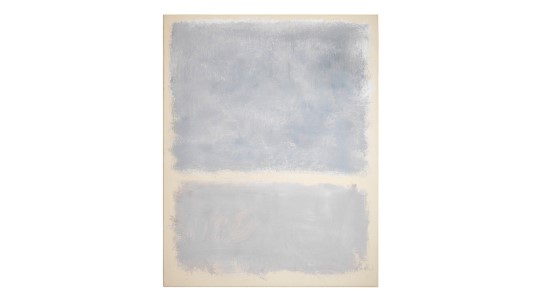Untitled
Mark Rothko
Transcription
Karianne Ommundsen:
In this painting we see two airy rectangles in muted blues. The edges are blurred and blurry, and the pale paper shines through in several places. The expression is more minimalist than before, and the palette is simplified.
Narrator:
This is Karianne Ommundsen, art historian at the National Museum.
Karianne Ommundsen:
This painting was created during a very productive year. In the studio, Rothko worked on several paintings at the same time. The new quick-drying acrylic paint allowed him to work at a fast pace and many paintings were created in a short time. In fact, he painted several hundred paintings on paper, including the series of bright acrylic paintings displayed in this room.
Narrator:
Rothko continued to develop his personal visual language and constantly seek new avenues. The production from his final years is quite varied, alternating from the dark to the light.
Karianne Ommundsen:
It was little known until recently that Rothko experimented with light pastel colors towards the end of his life. His late artistry has been mainly associated with the dark paintings, which have been characterized by a psychologizing and biographical reading.
Narrator:
These bright paintings shed new light on Rothko's artistry and challenge the traditional perception of him as a depressed artist characterized by darkness.
Karianne Ommundsen:
They bear witness to vitality and energy, and point towards something new. In this context, the paper holds a special position. Because while there are few paintings on canvas that are kept in light colors from these years, there are many paintings on paper. In this way, it can be said that the paper works offer a new reading of Rothko's artistry and complement the established narrative.